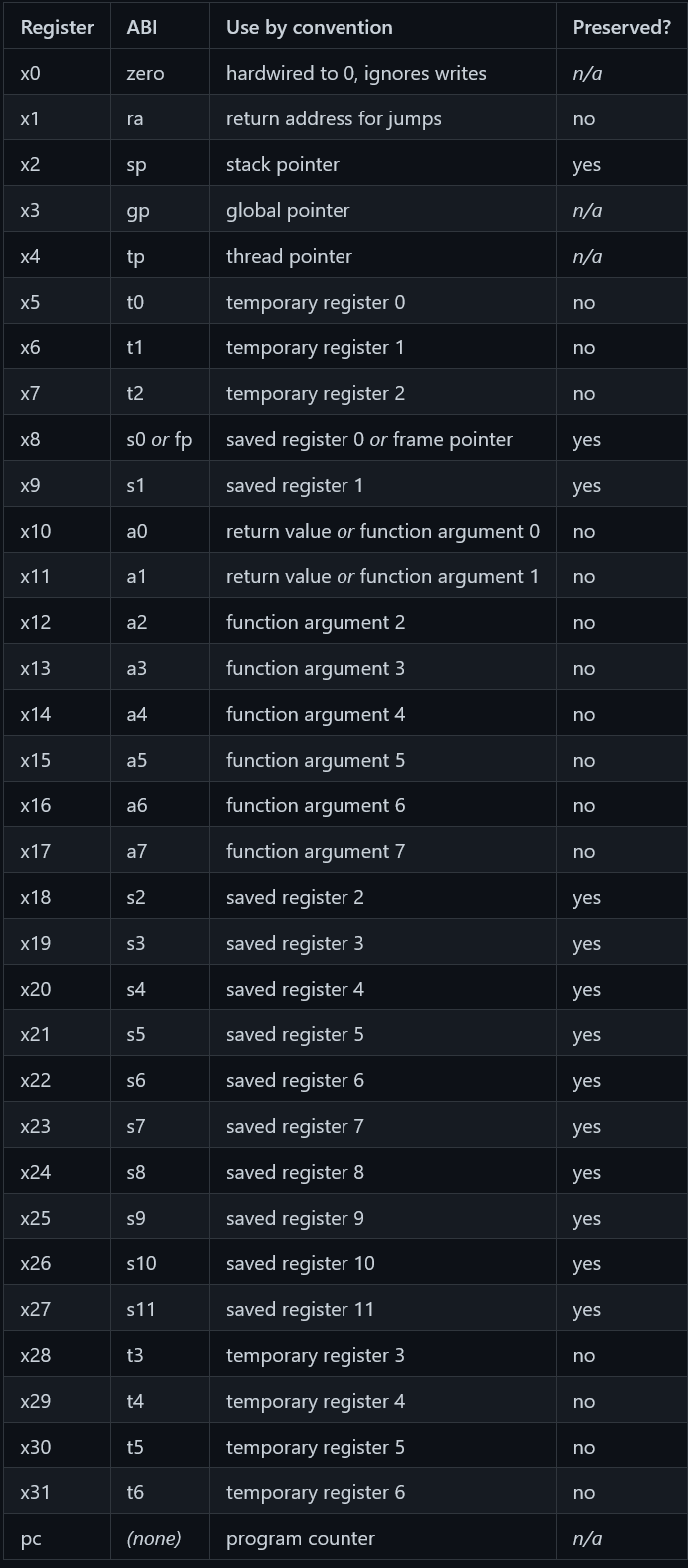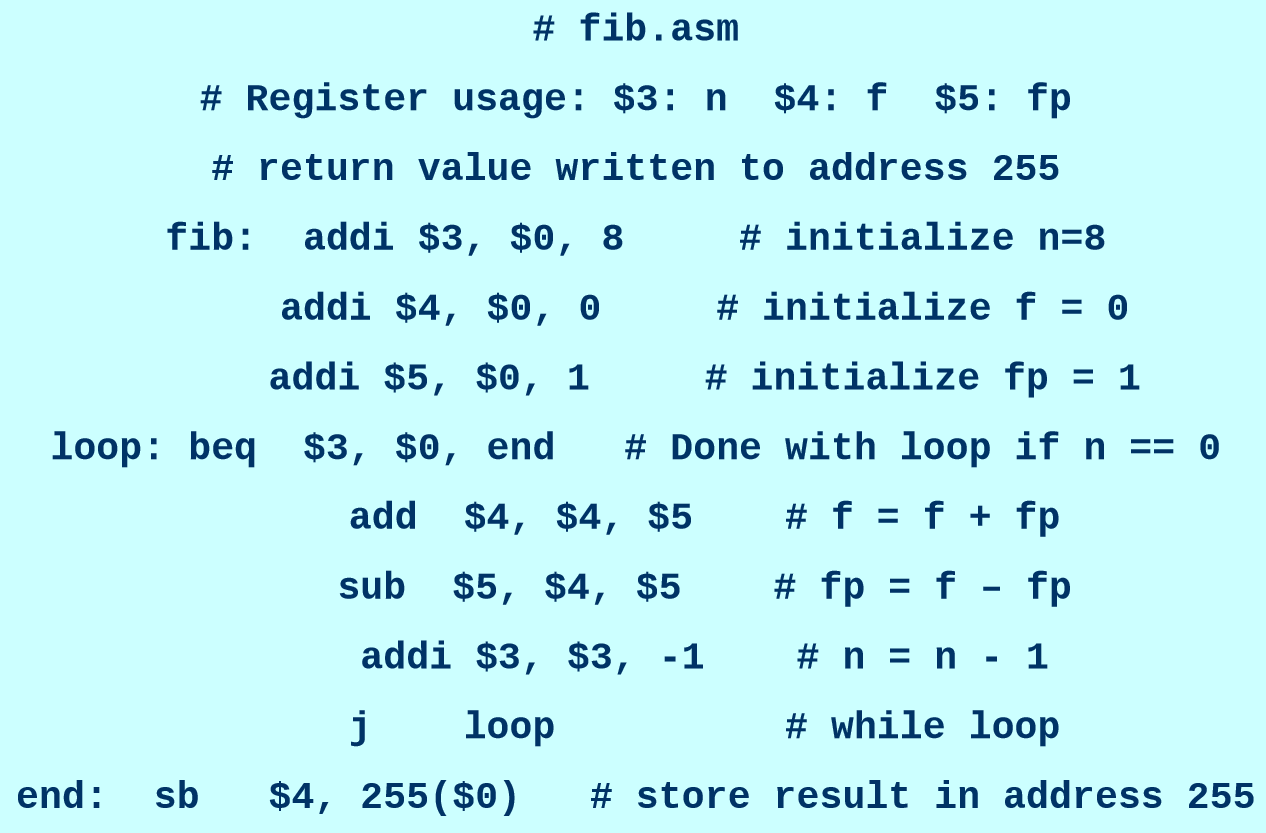RISC-V¶
resources¶
IDE-Jupiter
https://github.com/andrescv/Jupiter
doc
https://github.com/riscv-non-isa/riscv-asm-manual/blob/master/riscv-asm.md
converting languages into assembly
https://godbolt.org/
C++ can convert to RISC-V
RV64I Instruction Sets¶
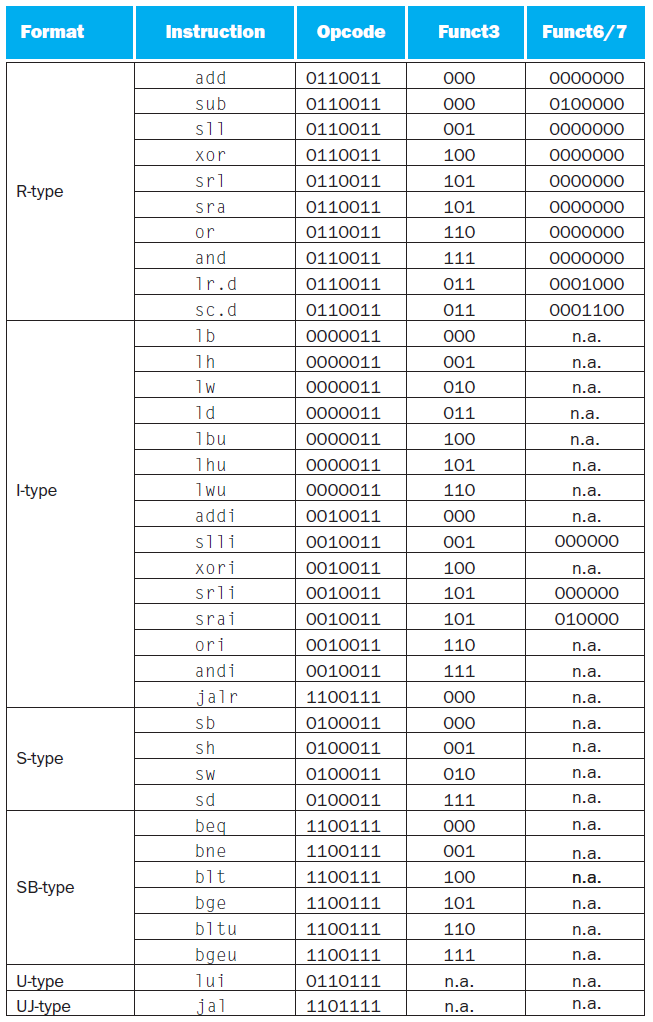
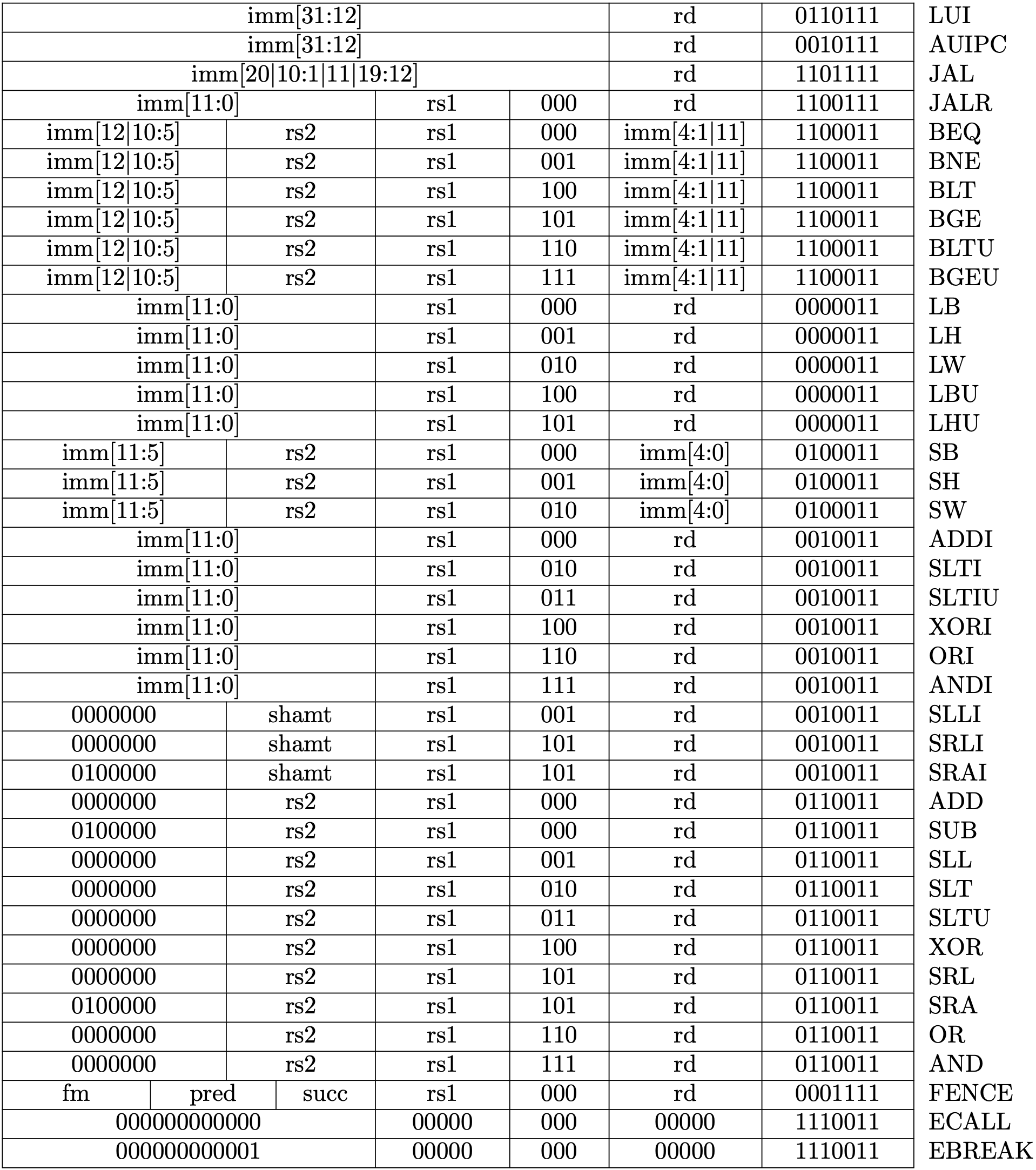 https://book.rvemu.app/instruction-set/01-rv64i.html
https://book.rvemu.app/instruction-set/01-rv64i.html
https://programmermedia.org/root/陳鍾誠/課程/系統程式/10-riscv/_doc/RISC-V編碼表.md
general registers¶
- https://github.com/riscv-non-isa/riscv-asm-manual/blob/master/riscv-asm.md#general-registers
- https://riscv.org/wp-content/uploads/2015/01/riscv-calling.pdf
-
Values are returned from functions in integer registers a0 and a1 and floating-point registers fa0 and fa1.
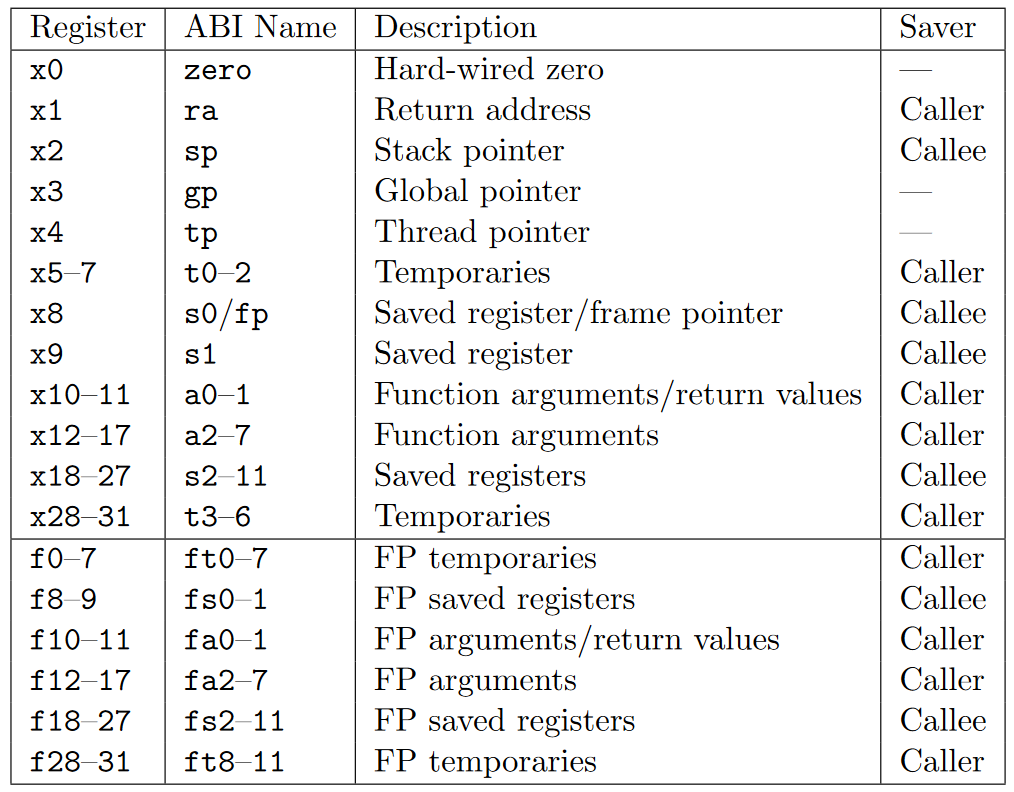
syntax¶
operations¶
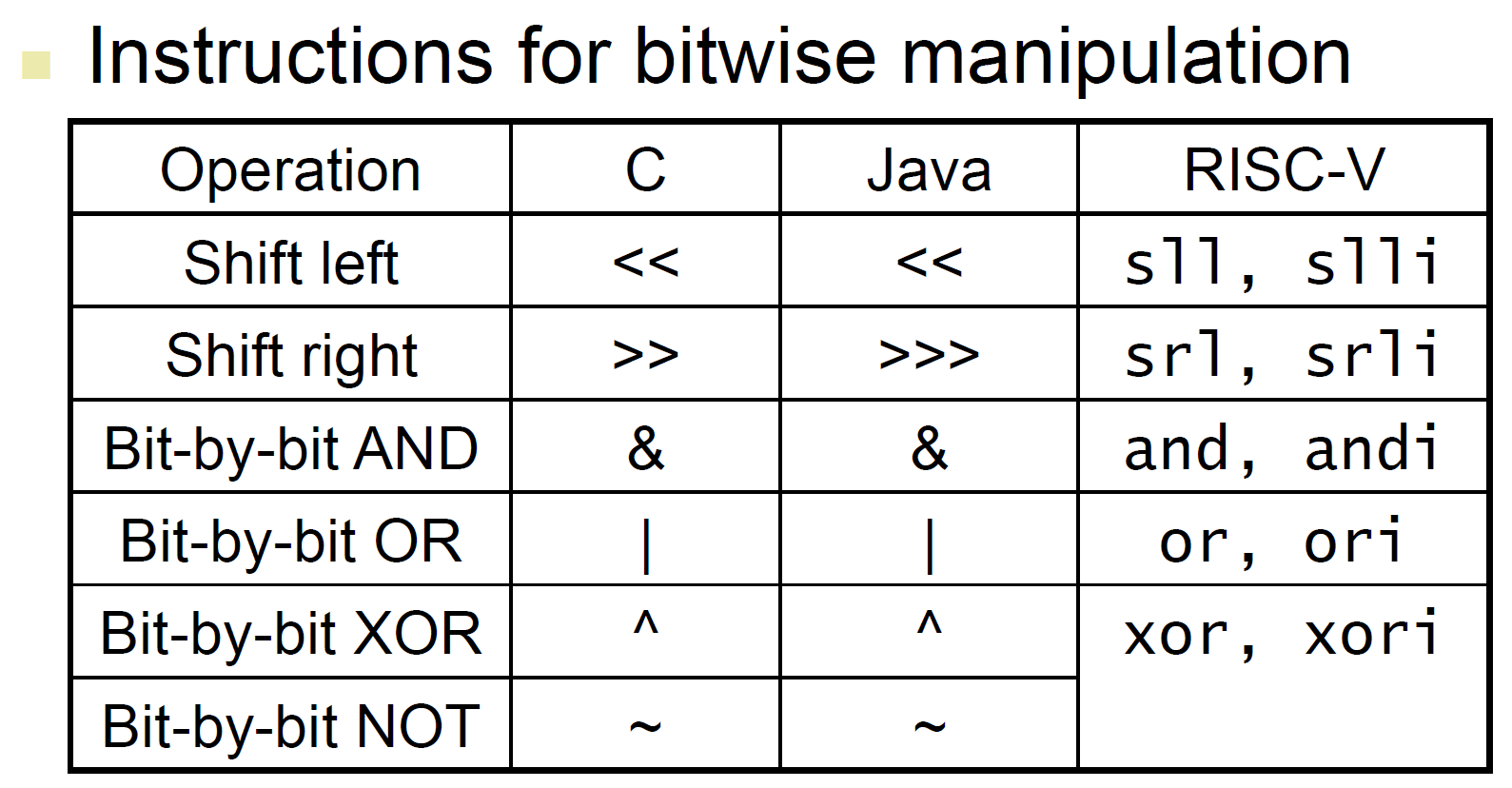

add for register + register, addi for register + number
add a, b, c→ a=b+caddi a, b, 1→ a=b+1mv a, b→ a=b- 實際上執行
addi a, b, 0
- 實際上執行
sub a, b, c→ a=b-cli x19, 0→ x19 = 0- ori
- or immediate
- OR the two values
slli a, b, 1→ a = b<<1 (i.e. 2b)srli a, b, 1→ a = b>>1 (i.e. b/2)
load & store¶
- byte/halfword/word/doubleword
- https://github.com/riscv-non-isa/riscv-asm-manual/blob/master/riscv-asm.md#load-and-store-global
ld x9, 64(x22)→ x9 = x22[8]sd 64(x22), x9→ x22[8]=x9- lui
- load upper intermediate's immediate
- https://github.com/riscv-non-isa/riscv-asm-manual/blob/master/riscv-asm.md#load-upper-immediates-immediate
- la
- load address
- https://github.com/riscv-non-isa/riscv-asm-manual/blob/master/riscv-asm.md#load-address
compare¶
beq a, b, callback→ if(a\==b){callback()}- equal
bne a, b, callback→ if(a!=b){callback()}- not equal
blt a, b, callback→ if(a<b){callback()}- less than
slti a, b, c→ if(b<c){a=1}else{a=0}
examples¶
https://hackmd.io/@sysprog/By5OE6fOr
recursive¶
factorial¶
https://stackoverflow.com/a/58139545/15493213
.text # recursive implementation of factorial
.globl __start
# sp = stack pointer
# ra = return address
fact: # arg: n in a0, returns n! in a1
addi sp, sp, -8 # reserve our stack area
sw ra, 0(sp) # save the return address
li t0, 2 # t0 <- 2
blt a0, t0, ret_one # a0<2 → a1 <- 1 (bc 0! and 1! == 1)
sw a0, 4(sp) # save our n # n -> 4(sp)
addi a0, a0, -1 # n <- n-1
jal fact # call fact (n-1)
# a1 <- fact(n-1)
lw t0, 4(sp) # t0 <- n
mul a1, t0, a1 # a1 <- n * fact(n-1)
j done
ret_one:
li a1, 1
done:
lw ra, 0(sp) # restore return address from stack
addi sp, sp, 8 # free our stack frame
jr ra # and return
__start:
li a0, 5 # n <- 5
jal fact # fact(5)
li a0, 1 # print it ??????
ecall
li a0, 17 # ????????
ecall # and exit
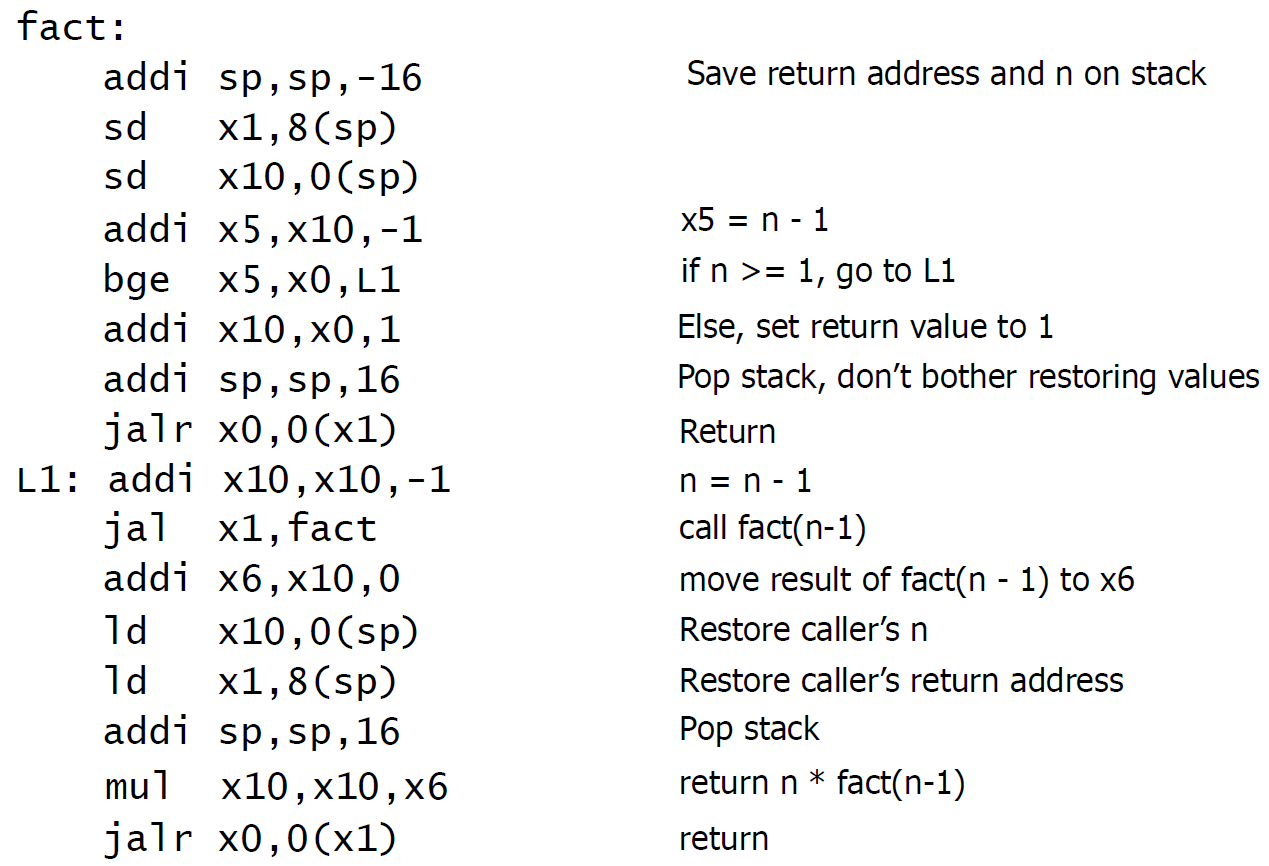
bubble sort¶
https://github.com/Shengyuu/Assignment_computer_arch/blob/master/Lab1_bubble_sort/bubble.s
Fibonacci¶
https://courses.cs.washington.edu/courses/cse378/02sp/sections/section4-5.html
fib: addi $sp, $sp, -8 # Entry code
sw $ra, 0($sp) # ra = return address
sw $fp, 4($sp)
add $fp, $sp, $zero # End of entry code
# Compare n with 2
lw $t0, 8($fp) # $t0 holds the argument n
slti $t1, $t0, 2 # if $t0 < 2 ...
beq $t1, $zero, over # ... skip the next two instructions
# n < 2
addi $v0, $zero, 1 # We're done with the recursion
j exit # Jump to the exit code
over: # n >= 2
# Calculate fib(n - 1)
addi $t0, $t0, -1 # Calculate n - 1
# Set up to call fib with argument n - 1
# No registers need to be saved
addi $sp, $sp, -4 # Allocate space for arguments
sw $t0, 0($sp) # n - 1 is our argument
jal fib # Call the fib procedure
# Clean up after calling fib with argument n - 1
addi $sp, $sp, 4 # Pop off the argument
# No registers need to be restored
# $v0 holds the result of fib(n - 1)
add $t1, $v0, $zero # Put the result into $t1
# Calculate fib(n - 2)
lw $t0, 8($fp) # $t0 holds the argument n
addi $t0, $t0, -2 # Calculate n - 2
# Set up to call fib with argument n - 2
addi $sp, $sp, -4 # Allocate space for saved register
sw $t1, 0($sp) # Save $t1 (the result of fib(n - 1))
addi $sp, $sp, -4 # Allocate space for arguments
sw $t0, 0($sp) # n - 2 is our argument
jal fib # Call the fib procedure
# Clean up after calling fib with argument n - 2
addi $sp, $sp, 4 # Pop off the argument
lw $t1, 0($sp) # Restore $t1 (the result of fib(n - 1))
addi $sp, $sp, 4 # Deallocate space for saved register
# $v0 holds the result of fib(n - 2)
add $v0, $t1, $v0 # Result is fib(n - 1) + fib(n - 2)
exit: lw $ra, 0($sp) # Exit code
lw $fp, 4($sp)
addi $sp, $sp, 8
jr $ra # End of exit code
